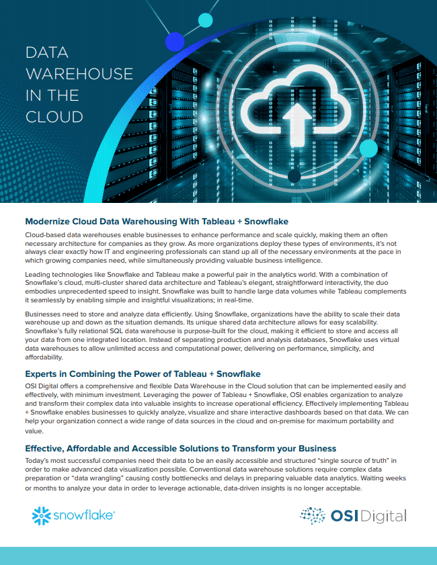
Cloud-based data warehouses enable businesses to enhance performance and scale quickly, making them an often necessary architecture for companies as they grow. As more organizations deploy these types of environments, it’s not always clear exactly how IT and engineering professionals can stand up all of the necessary environments at the pace in which growing companies need, while simultaneously providing valuable business intelligence. Leading technologies like Snowflake and Tableau make a powerful pair in the analytics world. With a combination of Snowflake’s cloud, multi-cluster shared data architecture and Tableau’s elegant, straightforward interactivity, the duo embodies unprecedented speed to insight. Snowflake was built to handle large data volumes while Tableau complements it seamlessly by enabling simple and insightful visualizations; in real-time.
Businesses need to store and analyze data efficiently. Using Snowflake, organizations have the ability to scale their data warehouse up and down as the situation demands. Its unique shared data architecture allows for easy scalability. Snowflake’s fully relational SQL data warehouse is purpose-built for the cloud, making it efficient to store and access all your data from one integrated location. Instead of separating production and analysis databases, Snowflake uses virtual data warehouses to allow unlimited access and computational power, delivering on performance, simplicity, and affordability.







